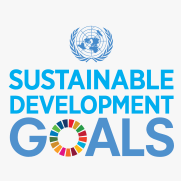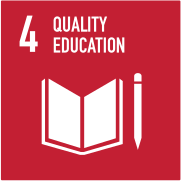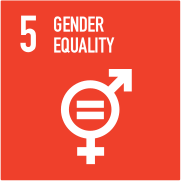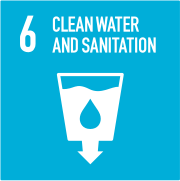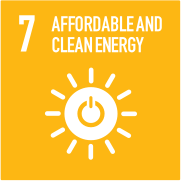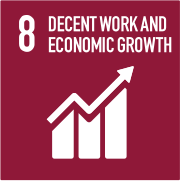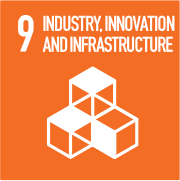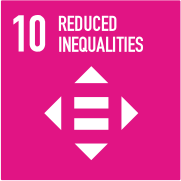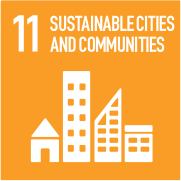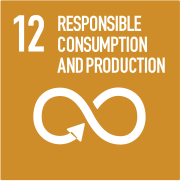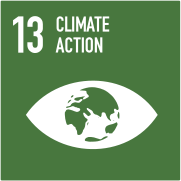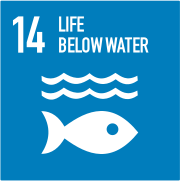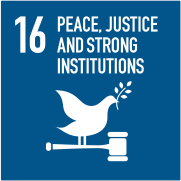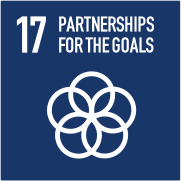SDG Compendium: SDG 12 - Responsible Consumption and Production
The Environmental Impact of Chocolate
Delectable but destructive: Tracing chocolate’s environmental life cycle Chocolate is a treat beloved across the world. But how much do we know about our favorite guilty pleasure’s environmental impacts? A recent study, published in the journal Science Advances, sheds light on key ingredients that make their way into many chocolate products — often untraced, and possibly linked to deforestation in Latin America, Africa and Asia. The study found that high volumes of cocoa, palm oil and soy — key ingredients used in bulk to make some of our chocolate favorites — are currently traded with little to no traceability via indirect supply chains. Read more in the article below published by the Mongabay News and Inspiration from Nature’s Frontline, written by Sean Mowbray.
MoreThe psychology of fast fashion – Driven to shop
Fast fashion is new, trendy clothing sold at a low cost and designed to be worn just a few times. With fast fashion, consumers can see an item of clothing worn on the runway or the red carpet and then purchase it online at lightning speed. One of the most prominent names in fast fashion today, adds an average of 6,000 new styles to its site every day, giving consumers an endless stream of new items to shop for. Consumers can now purchase clothing faster, cheaper, and more conveniently than ever before. So what’s the issue? Behind the glitzy and brightly colored clothing found on these sites, there is a much darker and uglier story. Fast fashion poses significant threats to the environment and the human labor it employs.
MoreA Closer Look into the Material Drivers of the Clothing Industry
Today, clothing manufacturers are paying more attention to the chemicals and materials they place into our wardrobes. This is no coincidence. Their awareness is due to upcoming legislation such as The Fashion Act and the European Union Strategy for Sustainable and Circular Textiles that aims to reshape the retail industry through stringent requirements. The age of profit over people, rapid industrialization, and endless consumption must end now.
MoreBeMED 19. Gathering data to measure the extent of beach litter on a beach – Biology/Science Fieldwork
Title Gathering data to measure the extent of beach litter on a beach – Biology/Science Fieldwork Author Cynthia Caruana Age Guide Year 8–11 Subject Area Integrated Science, Biology, Education for Sustainable Development Preparation Time 30 minutes Estimated Duration 120 minutes on site 60 minutes follow-up for learners (in case of report or publication) Site Rocky/ Sandy beach of your own choice All learning resources are being provided for: Golden Bay Sandy Beach, Għajn Tuffieħa in Malta Resources can be adapted for other beaches. Educational objectives – Learners will investigate the litter that may be found at the beach, including its origin and possible method of dispersal as well as identify whether litter is biodegradable and non-biodegradable. – Learners will assist in a clean-up and learn to dispose of the litter found on the beach in their appropriate waste bag. – Learners will use simple calculations to find the area studied and the percentage frequency of the litter found as well as weighing mass of micro-plastics and waste found. – Learners will use observation skills, estimation, data collection and skills of analysis together with teamwork. Learning Outcomes – I can describe what is littering the beach and investigate the frequency of the most common litter items. – I understand the relationship between humans and marine organisms. – I can critically assess and give a rating to the quality of a beach in terms of its litter. – I recognize the importance of taking action to reduce the impact of the beach litter problem. Link to SDGs SDG 12: Responsible Production and Consumption SDG 14: Life below Water SDG 15: Life on Land Educational resources required Appendix 19.1 – Background information Appendix 19.2 – Consent form Appendix 19.3 – Map of area under study (Golden bay, Malta) Appendix 19.4 – Traced map Appendix 19.5 – Weather forecast Appendix 19.6 – Worksheet 1 Appendix 19.7 – Adapted worksheet Appendix 19.8 – Different origins of litter Learners will bring their own: · Tablet/writing materials · Photo camera/mobile · Gloves · Small jar for collecting micro-plastics · Spade and bucket Equipment needed for each working group: · Frame Quadrat · Sieve · Waste bags for collection: grey bag for plastics, black bag for general waste, white/organic waste bag and reusable container such as bucket for glass · Weighing scales (1 to share between groups) · Tape measure (1 to share between groups) Remote preparation (if applicable) · 1 week before activity day, learners’ parents/guardians need to sign consent form to allow them to participate in activity (Appendix 19.2) · 1 day before activity day, learners will need to download or print (depending if tablet will be used) a map of the area (Appendix 19.3), the area is to be traced on a sheet of tracing paper (Appendix 19.4) · Weather Forecast for activity day (Appendix 19.5) · Download or print-outs of worksheet for data collection (Appendix 19.6 or 19.7) · Proper attire for lesson including boots and waterproof jacket Planning Considerations Weather: if inclement weather …
MoreBeMED 17. Investigating the effects of marine litter on sea water temperature and pH level
Title Investigating the effects of marine litter on sea water temperature and pH level Author Ramona Mercieca Age Guide Year 7-8 Subject Area Geography, Integrated science Preparation Time 1 hour Estimated Duration Data collection 10 mins daily spread over 2 months Site School ground Educational objectives To develop fieldwork skills such as collecting and recording data To learn more about the effects of marine litter Learning Outcomes – I can justify the importance of identifying problems, reflecting critically, thinking creatively and having a wider vision in order to plan for the future and become an effective agent of change. – I can use the natural, social and built environment that surrounds me, as a context and source of learning. – I am motivated to make a positive contribution to other people and their social and natural environment, locally and globally. – I can reflect upon the consequences of my actions on present and future generations. Link to SDGs SDG 3: Good health and well-being SDG 4: Quality education SDG 11: Sustainable cities and communities SDG 12: Responsible consumption and production Educational resources required 2 big glass jars Sea water Plastic litter Digital pH reader Digital thermometer Data logger to measure air temperature, humidity and air pressure GLOBE Observer App to record cloud type and cover (optional) Appendix 17.1 – Data sheets Remote preparation Organize a beach clean-up event. Marine litter collected to be taken at school to be used in investigation. Collect sea water samples in a small jerry can. Planning Considerations Very important to focus on the FACTS, especially when researching and collecting data about the effects of marine litter. For beach clean-up event: · Healthy and Safety information (stay in groups, stay away from the sea and cliffs, hazard of roads and weather). · Brief outline of day and objectives for the day. Set up the day’s investigation aim and consider hypotheses. Toilet stops and time for the lunch break. · Risk assessment/class list/medication/first aid kits Method Introduction In this activity students will investigate the effects of plastic litter on sea water temperature and sea water pH levels. Two large glass jars are filled with the same amount of sea water. In one of the jars the students put some plastic litter collected during the beach clean-up event done beforehand. The glass jars are to be placed outside exposed to the sun and rain. Development Every day students will take three readings of the sea water temperature and pH level from both jars and calculate the mean of the three samples. Moreover, the students will measure the air temperature, humidity and air pressure, describe the general outlook of the weather and observe cloud cover using the GLOBE Observer App (optional). Information collected is filled in the data sheets (Appendix 17.1). Conclusion Once all data is collected students will present it in a graph and analyze it through mean values of repetitions (pH and temperature) by jar to both treatments (with plastics, without plastics). The mean values are to be plotted along the …
MoreBeMED 16. Outdoor Classroom Activity – Beach Fieldwork
Title Outdoor Classroom Activity – Beach Fieldwork Author Ramona Mercieca Age Guide Year 7 Subject Area Geography Preparation Time 1 hour Estimated Duration 4 hours Site Coastal Area Educational objectives To further students’ map reading skills. To develop fieldwork skills such as collecting and recording data. To learn more about their local area and describe how litter make them feel. Learning Outcomes – I can use the basic mapping skills which include a scale, a legend and compass points to plan journeys, latitudes and longitudes to locate places. – I can use appropriate sources to observe and record local weather. – I can justify the importance of identifying problems, reflecting critically, thinking creatively and having a wider vision in order to plan for the future and become an effective agent of change. – I can use the natural, social and built environment that surrounds me, as a context and source of learning. – I am motivated to make a positive contribution to other people and their social and natural environment, locally and globally. – I can reflect upon the consequences of my actions on present and future generations. Link to SDGs SDG 3: Good health and well-being SDG 4: Quality education for all SDG 11: Sustainable cities and communities SDG 12: Responsible consumption and production Educational resources required A4 map of beach site x1 (per group) Appendix 16.1 – Group Recording Sheets X5 (per group) Appendix 16.2 – Litter Survey Sheet x1 (per group) Pencils Clipboards Digital cameras Data logger Thermometer Digital pH reader GLOBE Observer App – optional Small container X1 (per group) Remote preparation Teacher needs to prepare the resources as indicated in the previous section. The outdoor classroom activity will be an opportunity for students to apply the knowledge and skills learned during geography lessons like using a map, observing and recording the weather, locating beach site using the coordinates. Before the outdoor classroom activity the students will do research about marine litter – its sources and effects on the marine environment. Planning Considerations It is very important to focus on the FACTS, especially when researching and collecting data re marine litter. Healthy and Safety information (stay in groups, stay away from the sea and cliffs, hazard of roads and weather). Brief outline of the day and objectives for the day. Set up the day’s investigation aim and consider hypotheses. Toilet stops and time for the lunch break. Risk assessment/class list/medication/first aid kits. Method Activity Outline: Half the day is spent at the beach collecting field data on weather, sea water temperature, sea water pH level and doing a litter survey. Introduction Introduce site and locate it on the map of the Maltese Islands. Briefly introduce the history of the area (fishing and tourism and coastal erosion). The students will be split in groups and each group will select a leader and is given a pack with the group’s recording sheets and a small container. Development Students explore and investigate the beach site by answering the questions on the …
MoreBeMED 14. Under-the-water Experience
Title Under-the-water Experience Author Ms Sharon Giordimaina Age Guide Year 6 Subject Area Science and Technology, Education for Sustainable Development Preparation Time 15 minutes Estimated Duration 60 minutes Site Just in case the school would be interested to organize a follow-up activity. A safe diving-experience site can be found in the respective country or a submarine outing organized for school children. Educational objectives Students will learn about some below-the-water species and plants. – I can investigate and give examples of the adaptations of plants to suit their environment. – I know that the environment is a system which can be harmed. – I know about dangers posed to the environment such pollution and the destruction of marine life. Learning Outcomess – I can identify priorities and evaluate potential consequences of different decisions and actions. – I can involve myself and others in real-world issues to bring about a positive difference. Link to SDGs SDG 12: Responsible consumption and production. SDG 14: Life below water. Educational resources required Appendix 14.1 – Sea plants and animals templates plastic waste to create an under-the-water scenario. Appendix 14.2 – Handout activity with a list of species to tick the ones found in the sea. Appendix 14.3 – Handout activity – Under the sea short questions. Appendix 14.4 – A list of reflective questions. Appendix 14.5 – Flashcards – Vocabulary related to marine life. Appendix 14.6 – Video links Internet connection Remote preparation Introduction through a video-clip about a diving experience (https://youtu.be/isFBQFhfI_s) or part of it. Setting up a below-the-water scene, using Appendix 14.1. Students could also be invited to draw or colour in these creatures themselves during previous expressive-arts-related activities. Planning Considerations It might be necessary to give some basic information about marine life, marine pollution with a possible link to water pollution. Method Introduction – Talk briefly about sea life and see what the students know about this ecosystem. Have they ever learnt about it in detail? How do they feel when they are at sea or dive shortly under the sea? – Share a video-clip about undersea creature on earth (https://youtu.be/nvq_lvC1MRY). Invite students to observe and look closely at life under the sea. – Introduce some vocabulary related to the sea plants and creatures. – Discuss how these can be affected by plastic residues thrown on the ground. Development – Invite students to talk about the under-water scenario they can see, created with the use of Appendix 14.1. Have they ever experienced an under-water observation? Are they curious to experience it? – Distribute the handout with a list of species (Appendix 14.2). Go through it together. Then give some ample time for them to look around/think of sea life under water and write what they can see or be found in that habitat. Refer to the short questions in Appendix 14.3. – Debate about what is proper and improper in the scenario. – Speak shortly about the divers’ experiences, how prepared they should be and what they would ask if they were …
MoreBeMED 12. Persuasive Writing Task
Title Persuasive Writing Task Author Ms. Samantha Abela Age Guide Year 5-11 Subject Area English, Maltese, Geography, Social Studies, ICT, Environmental Studies Preparation Time Nil Estimated Duration 2 hours Site Classroom or computer lab Educational objectives Students understand and are empowered to address the real causes and consequences of unsustainable behaviour within the context of an interdependent and globalised world. Learning Outcomes – I can order ideas and describe them effectively to contribute to discussions supported by the teacher. – I can write for a stated purpose, using grammar and sentence starters. – I can gather information from long and complex articles and books. Link to SDGs SDG 12: Responsible Consumption and Production SDG 14: Life below water Educational resources required Interactive Whiteboard Appendix 12.1 – Spider diagram Appendix 12.2 – Writing frame Appendix 12.3 – Capturing your audience Appendix 12.4 – Persuasive writing vocabulary Appendix 12.5 – Writing prompts discussions Appendix 12.6 – Websites to help students with research Internet Connection Remote preparation The ‘Fact-Finding’ Task can be done before the lesson and allot more time to writing and class discussion. The links provided can be sent to the students beforehand. Planning Considerations The lesson can be done in class or in a Computer Lab. In case of a Lab, booking of the facility would be required. The Fact-Finding task can be done as an introduction or as a pre-task before the lesson. Students require some technological device and an internet connection during the lesson for the Fact-Finding task. Students should be warned about the huge amount of information available online. Teachers can opt to: Limit the websites they search by giving them a prescribed list or by limiting the search by geographical zone example: things related to Malta only. Method Introduction 5 minutes – The teacher introduces the topic of ‘Persuasive Writing’. The teacher asks what is the meaning of the word ‘Persuasive’ and can create a spider diagram (Appendix 12.1) on the board jotting down the students’ ideas before giving the following definition: “making you want to do or believe a particular thing” – Definition by Cambridge Dictionary “able, fitted or intended to persuade” “inducement” – Definition by Dictionary.com Development 10 minutes -The teacher moves on to introduce the students to the main activity. The students will act as opinion writers for a local newspaper. They are concerned with the presence of plastic litter in our seas. The task is to: Write a letter addressed to the editor in which they have to: · Outline their concern by explaining what it is about. · Provide evidence on the concern by quoting events, sources, statistics, etc. · Provide arguments about the concern, namely why this is an important issue to be tackled. · Provide ideas about possible solutions to the concern. · Conclude the letter in a positive manner, hoping that you are acknowledged. The teacher can provide a Writing Frame (Appendix 12.2) to guide the students in their task. 20 minutes – Now that the students know …
MoreBeMED 11. Single–Use Plastic Hunt
Title Single–Use Plastic Hunt Author Ms Maria Baldacchino Age Guide Year 5-8 Subject Area Environmental Studies Preparation Time 15 minutes Estimated Duration 3 lessons of 45 minutes each Site School/Home: Students may spread the knowledge to the family and become the owners of positive change. Educational objectives To reduce / eliminate the use of single-use plastics from our daily usage. Learning Outcomes – I can justify the importance of identifying problems, reflecting critically, thinking creatively and having a wider vision in order to plan for the future and become an effective agent of change. – I can critically assess processes of change in society and envision a more equitable and sustainable world. – I can identify priorities and evaluate potential consequences of different decisions and actions. – I can involve myself and others in real-world issues to bring about a positive difference. – I am a critically reflective person and am able to evaluate decisions, choices and actions. – I am responsible for my actions and capable of anticipating, adapting to and facing change. – I can reflect upon the consequences of my actions on present and future generations. – I am motivated to make a positive contribution to other people and their social and natural environment, locally and globally. – I can live in harmony with myself, others and the natural world at a range of levels from the local to the global. – I have a future-oriented perspective for how I live my life as a citizen of the world. Link to SDGs SDG 6: Clean Water and Sanitation SDG 12: Responsible Consumption and Production SDG 14: Life Below Water Educational resources required Internet connection Appendix 11.1 – Activity Sheet – Word Search: Ways to reduce your single-use plastic Appendix 11.2 – Activity Sheet 2 – Single-Use Plastic Lifecycle Appendix 11.3 – Activity Sheet 3 – Single-Use Plastic Hunt Appendix 11.4 – Activity Sheet 4 – Ways to Reduce your Single-Use Plastic Remote preparation Teachers may assign research on what are single-use plastics and brainstorm with the students on ideas to reduce these single-use plastics. Method Introduction The activity is to convey the message and instill the correct mentality of protecting our marine life, by outlining the basic items we use on a daily basis that may seem innocent but create a big negative impact on the marine environment, once disposed of. The first activity is a word search, Appendix 11.1. The words are based on the information provided in Appendix 11.2 – Single-Use Plastic Lifecycle, which shows information on common plastic items used on a daily basis such as straws, coffee pods, plastic bottles, and the like. At the end of this activity the following video link may be accessed: How plastic hurts the world: https://www.youtube.com/watch?v=VUUUxOl715s Development The next step is for the students to go on a Single-Use Plastic Hunt, using Appendix 11.3, of plastic household items which they will colour in and strike off by using the famous X marks the spot. They will assign …
MoreBeMED 9. Largest to smallest – the story of a plastic particle
Title Largest to smallest – the story of a plastic particle Author Neville Dimech Age Guide Year 4 Subject Area Science, Geography, English language Preparation Time 10 minutes to collect resources needed. 5 minutes to familiarise oneself with the PowerPoint presentation. Estimated Duration 45 minutes Site Classroom with interactive board. Educational objectives To create awareness of the issue of plastic litter which ends up in the seas, oceans, seabed and ocean floors as well as sandy beaches. Learning Outcomes – I can classify materials as natural or man-made. Link to SDGs SDG 12: Responsible consumption and production SDG 14: Life below water Educational resources required plastic items such as a plastic cup, a plastic straw, a small plastic toys used on the beach, balls, buckets, spade, plastic water bottles, empty sun cream bottles, empty yogurt cups, plastic and cotton ear buds, cigarette butts, and more. Appendix 9.1 – Powerpoint PLASTY Interactive whiteboard Internet Connection Planning Considerations At the end of the lesson the students are told that the resources used in this lesson will be stored and reused by other students/during other lessons. Method Introduction Engage (10 minutes) The teacher places on the table some plastic items such as a plastic cup, a plastic straw, small plastic toys used on the beach: balls, buckets, spade, plastic water bottles, empty sun cream bottles, empty yogurt cups, plastic and cotton ear buds, cigarette – butts, and more. The teacher asks the students to look carefully at the items. Ask: Where do we find these? A round of ideas and opinion is taken. These can be written on the interactive or white board or on a large flip chart. Development Inquire (25 minutes) Ask: What happens to plastic when it is out in the natural environment? A round of ideas and opinion is taken. These can be written on the interactive or white board or on a large flip chart. Where does plastic come from? A round of ideas and opinion is taken. These can be written on the interactive or white board or on a large flip chart. Watch the interactive Power Point (Appendix 9.1). Largest to smallest – the story of a life particle. The Story of the life of a plastic particle, “Plasty” from its birth in a plastic manufacturing factory to microplastic fragments ending at the bottom of the ocean floor. The learners will direct the story of “Plasty” and note that from whichever route and life-story they choose, “Plasty” will still end up at the bottom the sea. As they trace the life of the plastic particle they realize that it is not on its own in the end… The students choose what the plastic raw material will become. They follow what happens to the plastic. They conclude that many different plastic items eventually find their way to the sea. The plastic items end up as very small pieces – “micro-plastics.” Conclusion Evaluate (10 minutes) The students come to the conclusion that plastic materials will end up in …
MoreBeMED 7. Accumulation
Title Accumulation Activity 3 of 3 about plastic pollution Author Saviour Bonnici Age Guide Year 4-8 Subject Area Physical Education Preparation Time 3 minutes Estimated Duration 30 to 45 minutes Site Gym/ Yard / Outdoor space No. of participants Whole class Educational objectives This is a fun physical education activity with the aim of teaching students about micro-plastics and our impact on the sea, fish life and our health. This activity provides a realistic and practical example of how micro-plastic accumulates in the food web. Learning Outcomes – Speed. Agility. Stamina. Quick reactions. – I understand that I am responsible for my actions and am capable of anticipating the problems of consuming plastic and adapt to reduce it. Link to SDGs SDG 12: Responsible consumption SDG 14: Life below water SDG 15: Life on Land Remote preparation Playing ‘Uncontrollable’ (Lesson plan 5) and ‘Plastic Breakdown’ (Lesson plan 6) before this activity will prepare students for this activity, however this is optional. Equipment needed Three types of coloured bibs · 6 green bibs · 4 yellow bibs · the rest (according to number of participants) red bibs Internet connection is needed to watch the video links provided in the background information. Method Objective: Catch your food Student Organization: Small Fish (S) – 6 students wearing green bib (or any other colour) Medium Fish (M) – 4 students wearing yellow bib Top Predator Fish (P) – 2 students Fish Food (F) / Plankton – The majority of the remaining students wearing a red bib (FR). It is VERY IMPORTANT to leave only a few without bibs (F). Playing the Game Part 1: Fish food is eaten by small fish · The playing area represents the Ocean · The fish food run in the Ocean · Instruct the small fish to go and eat (catch) all the fish food. · For now, the other fish are waiting. · Whenever a fish food is caught, he/she is transported to a designated captured area where they will remain. Everyone keeps a record of how many fish food they captured. Game is paused when all fish food is caught. Part 2: Small fish eaten by Medium fish Medium Fish introduced. Now the small fish will be eaten by the medium fish and transported to the captured area. Part 3: Medium fish eaten by the Top Predator fish Top Predator Fish introduced. Same as part 2 and the game ends here. Part 4: Explanation See Recap section below Recap The reason for the fish food with the red bib (FR) is now revealed. They are the micro-plastic. The others are the actual fish food (F). The small fish do not know the difference so when they eat, micro-plastics enter the food web. The higher the food web hierarchy, the more micro-plastic accumulation. Apart from killing marine life, when we humans eat fish especially the top fish, we inevitably also ingest the micro-plastics. Actions students can take: · When encountering plastic rubbish, try to …
MoreBeMED 6. Plastic Breakdown
Title Plastic Breakdown Activity 2 of 3 about plastic pollution Author Saviour Bonnici Age Guide Year 1-8 Subject Area Physical Education Preparation Time 3 minutes Estimated Duration 30 to 45 minutes Site Gym/ Yard / Outdoor space No. of participants Whole class Educational objectives Through this interactive activity students learn how plastic breaks into microplastic. It is important for students to conceptualize the process of plastic breakdown, for them to act against the effects of micro-plastics. Additionally, this is a great activity to work on teamwork and improve their physical abilities mostly by responding to quick stimulus, running and agility. Learning Outcomes – I am able to react to acoustic and visual stimuli through a change in speed while running, and at the same time changing direction quickly and effectively. – I am able to understand that I am responsible for my actions and capable of anticipating the problems of consuming plastic and adapt to reduce it. Link to SDGs SDG 12: Responsible consumption SDG 14: Life below water SDG 15: Life on Land Remote preparation Playing ‘Uncontrollable’ (lesson plan 5 in this resource pack) before this activity will help students to better conceptualize micro-plastics. But this is optional. Equipment needed 4 Bibs Internet connection is needed to watch the video links provided in the background information. Method Objective: Students must quickly react to form new groups otherwise they risk being left behind. Part 1: Familiarize With The Game 1) A class of say 25 students, hold hands – representing a plastic bag floating in the sea, the playing area (Diagram 1). 2) The teacher calls out a smaller number. Students must quickly form new groups consisting of the mentioned number. This represents the plastic bag disintegrating into smaller pieces. 3) Smaller numbers are called in sequence, each time forming new groups until eventually the number 1 is called out and students are now single individuals – this is the micro-plastic. The single plastic bag problem has now multiplied into unmanageable micro-plastics. 4) The teacher explains about the process of plastic breakdown. Check the Recap section below for information. Part 2: Introducing Marine Life 5) Restart the game. 6) Same as part 1 but this time 4 students wearing a bib represent marine life. These will be roaming around the playing area (diagram 2). All the other students representing the plastic bag try to catch the marine life. Rule: A catch is valid if the plastic group has the correct amount of members last called by the teacher. If for some reason the group splits while catching, this does not count. Being large the plastic will not be able to catch marine life at first. The situation turns when there are too many plastic pieces engulfing marine life. Recap When Part 1 is over the teacher explains about disintegration of plastic. Environmental factors such as the sun and salt, breakdown the plastic bag into very small pieces which are impossible to collect. The video …
MoreBeMED 5. Uncontrollable
Title Uncontrollable Activity 1 of 3 about plastic pollution Author Saviour Bonnici Age Guide Year 1-8 Subject Area Physical Education Preparation Time 3 minutes Estimated Duration 30 to 45 minutes Site Gym/ Yard / Outdoor space No. of participants Whole class Educational objectives Students will learn about the negative impacts of using a lot of plastic while engaging in physical activity. Learning while moving, and having fun, greatly improves the long-term memory of the learnt material. Students will understand that less plastic = healthier oceans = healthier fish, Earth and humans. Students will acknowledge that as long as humans continue to use huge amounts of plastic, the waste problem continues to be uncontrollable – it is up to us to reduce the consumption. Students will realise how wind and storms aggravate the plastic pollution in the sea. Learning Outcomes – I am able to throw an implement from a standing and moving position using the correct technique (alternate limbs) and correct grip. – I can identify the root causes of injustice (plastic rubbish) and can take actions that lead to a better quality of life and environmental sustainability. – I understand that I am responsible for my actions and capable of anticipating the problems of consuming plastic and adapt to reduce it. – I can involve myself and others (family and friends) in real-world issues (plastic rubbish) to bring about a positive difference (reduce single-use plastic consumption). – I am now equipped with a future-oriented perspective for how I live my life as a citizen in my country and in the world. Link to SDGs SDG 12: Responsible consumption SDG 14: Life below water SDG 15: Life on Land Equipment needed The teacher will need to mark the areas (diagram below) by either: 1) Mark the midline and rubbish bin area with markers or cones. OR 2) If equipment isn’t available improvise by using either 2 chairs or 2 bottles to mark the midline peripheries. Same goes for the rubbish bin area. The teacher will also need safe throwable material by either using: 1) Bibs, markers and/or soft balls (at least 10 pieces but the more the better) OR 2) If this is not available any other plastic material such as plastic bottles, caps & wrapping. Internet connection is needed to watch the video links provided in the background information. Safety Precautions Use soft objects to throw that do not have a sharp edge – markers and softballs are great. Method Objective: The team with least amount of plastic before time expires wins the game. Part 1: Introducing Plastic in the Sea The game 1. Playing area is divided in 2 sections (diagram above) – Beach and Sea. 2. The Beach is occupied by the Teacher and 2 other students. These are the bad guys. The rest of the students are on the ‘Sea’ area – the good guys. 3. The bad guys have a few markers/bibs/ or any other type of safe throwable equipment – representing …
More